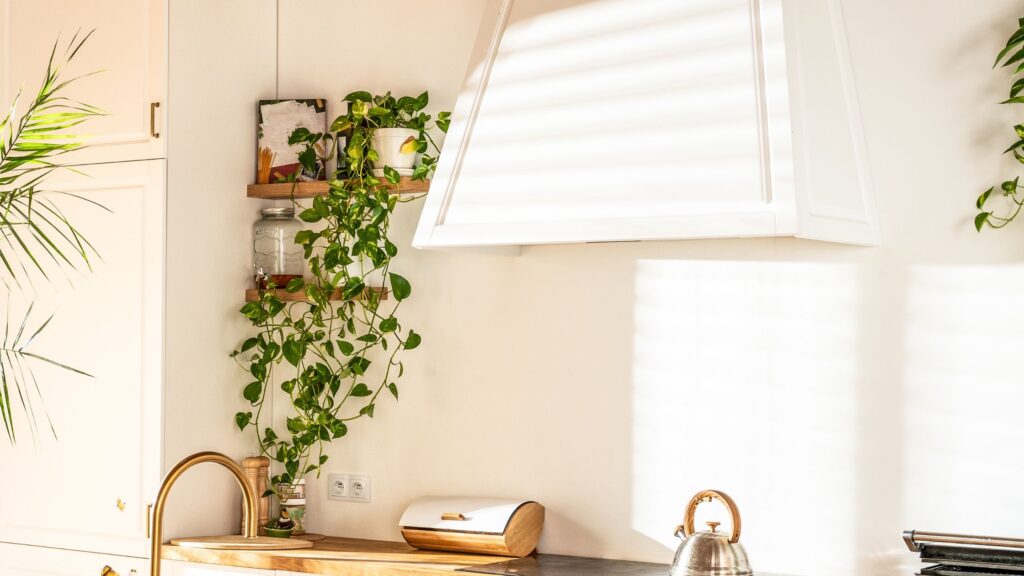When the word “money plant” refers to a variety of plant species, Epipremnum aureum also called Devil’s ivy or pothos is the most frequently used. Originating in Southeast Asia, this plant is often grown as a popular houseplant due to its low maintenance needs and eye-catching leaves.

Types Of Money Plant
Many plant species are known as “money plants” because of their positive connotations with luck or riches. Here is a list of a few of the most well-known ones:
Benefits of Money Plant
is a common houseplant because of its aesthetic appeal as well as several other advantages:
Air Purification: The money plant, like many other houseplants, helps to better indoor air quality by using its greenery to absorb pollutants from the air including benzene, xylene, and formaldehyde. This may help create a healthier atmosphere indoors.
Easy Maintenance: Money plants need very little maintenance, which makes them ideal for novices or people with hectic schedules. They can grow well with little watering and upkeep and can cope with a broad variety of light conditions.
Feng Shui: The money plant is thought to infuse a home with good charm, wealth, and pleasant energy. It is believed that placing a money plant in specific locations of the house—especially the wealth or money area—will draw riches and fortune.
Aesthetic Appeal: The money plant gives a stylish touch to any indoor environment with its heart-shaped leaves and trailing tendrils. To improve the room’s attractiveness, it can be trained to climb on supports or grow in hanging baskets or pots.
Versatility: Money plants are adaptable and may be cultivated in a variety of interior settings, including living rooms, workplaces, and bedrooms. They can also be grown in low light.
Disadvantages of money plant
Epipremnum aureum, often known as pothos or Devil’s ivy, is a popular indoor plant that grows well in a variety of environments and requires little maintenance.
Toxicity: Money plants may be harmful to both people and pets if consumed. Symptoms including nausea, vomiting fits, and trouble swallowing can occur when leaves or stems are consumed. It is imperative to keep the plant out of children’s and dogs’ reach.
Invasive: Money plants that are grown outside may become invasive in some settings, especially tropical ones. Its fast growth behavior enables it to outcompete natural plants by spreading quickly.
Sensitive to overwatering: Money plants can be delicate to overwatering, even though they are usually low-maintenance plants. A surplus of water can cause root rot and other problems. To avoid this, it’s important to let the soil dry up in between waterings.
Pests: Similar to many other indoor plants, money plants can suffer damage from aphids, spider mites, and mealybugs as well as other pests. To keep pests away, routine treatment and inspection may be required.
Money Plant Care
Devil’s ivy, or pothos, as it is commonly called, is a reasonably simple Money plant to care for (Epipremnum aureum). These are some vital aftercare pointers:
Light: Indirect sunlight is ideal for money plants to flourish. Although they may survive in low light, they really like bright, indirect light. As direct sunlight might burn their leaves, keep them out of the sun.
Watering: When watering, let the top inch or two of the soil dry out in between applications. It’s crucial to keep the plant out of the water since overwatering can cause root rot.
Soil: Well-draining potting mix is preferred by money plants. Sand or perlite mixed with potting soil is a good combination.
Temperature and Humidity: The best indoor range for money plant development is 65–85°F (18–29°C). Though frost-sensitive, they can withstand significantly lower temperatures.
Fertilization: During the growing season (spring and summer), feed your money plant every 4-6 weeks with a balanced liquid fertilizer diluted to half strength. During the fall and winter, when growth slows down, reduce or stop fertilizing.
Pruning: Frequent pruning encourages bushier growth and aids in maintaining the form of the plant. To maintain the plant healthy and visually appealing, trim back any lanky stems and remove any yellowing or dead leaves.
Propagation of Money Plant
Money plants (Epipremnum aureum) are incredibly easy to propagate through stem cuttings. Here’s a step-by-step guide on how to propagate a money plant:
Select a Healthy Stem: Choose a healthy stem from the mother plant that has several leaves. Look for a stem that’s long enough to provide space for multiple nodes (the points on the stem where leaves emerge).
Prepare the Cutting: Use a clean, sharp pair of scissors or pruning shears to cut the stem just below a node. Nodes are crucial because they contain the dormant buds from which roots will emerge.
Remove Lower Leaves (Optional): If the lower leaves on the cutting sit below the water or soil line, you can remove them to prevent them from rotting. Leave at least a couple of leaves at the top of the cutting.
Rooting in Water: Place the cutting in a container of clean water, making sure that at least one or two nodes are submerged. Place the container in a location with indirect sunlight and change the water every few days to prevent stagnation and algae growth.
Rooting in Soil (Optional): Alternatively, you can insert the cutting directly into a pot filled with moist potting soil. Bury the node(s) in the soil and keep the soil consistently moist, but not waterlogged. You can cover the pot with a plastic bag to create a mini-greenhouse effect, which can help retain moisture and encourage rooting.
Wait for Root Growth: Rooting typically takes a few weeks. You’ll start to see roots emerging from the nodes submerged in water or soil. Once the roots are several inches long and well-established, the cutting is ready to be transferred to a pot.
Repotting of Money Plant
When a money plant (Epipremnum aureum) outgrows its container or the soil loses its nutrients, repotting is required. This is a how-to instruction for repotting a money plant:
Select the Right Time: When a money plant is actively growing, in the spring or early summer, is the ideal time to repot it.
Choose a New Pot: Go for a pot that is one size bigger than the one you have now. To avoid waterlogging, make sure the new pot includes drainage holes at the bottom.
Prepare the Pot: To enhance drainage, add a layer of tiny pebbles or broken pottery to the bottom of the new pot.
Plant Removal from Current Pot: Carefully turn the pot upside down and remove the money plant by sliding it out. Use your fingers or a gardening tool to carefully free the roots if the plant is root-bound, meaning its roots are tightly packed inside the container.
Examine and Prune the Roots: Look for any indications of decay or illness in the roots. Using sharp pruning shears or scissors, trim away any damaged or too-long roots.
Plant the Tree in the New Pot: Position the tree such that the top of the root ball is just below the edge of the container in the center of the new pot.
Water the Plant: Give the money plant a good watering after repotting, or until the water runs out of the container. This facilitates dirt settling around the roots.
Choose a Good Spot: Position the newly replanted money plant in an area that receives plenty of indirect light. Keep it out of direct sunlight to prevent scorching of the leaves.
Disease of Money Plant
If given the right care, money plants (Epipremnum aureum) are often hardy and resistant to many illnesses. But infrequently, they can have a few typical problems:
Root Rot: Fungal infections are the source of root rot, which can be brought on by overwatering or inadequate drainage. Wilting, yellowing leaves, and an unpleasant soil odor are some of the symptoms.
Leaf Spot: A variety of bacterial or fungal infections can cause leaf spot illnesses, which manifest as dark, wet patches or lesions on the leaves.
Powdery Mildew: The leaves and stems of plants with powdery mildew have a white, powdery covering on them.
Mealybugs and Aphids: Although not illnesses, these pests can infest money plants, causing withering and yellowing as they draw sap from the leaves.
Money Plant Vastu
According to the ancient Indian discipline of construction and placement known as Vastu Shastra, plants may improve the flow of energy in a house or place of business.
Direction: Wealth and prosperity are linked to the north in accordance with Vastu principles. It is said that placing a money plant in the north direction of your house or place of business can draw wealth. It is also said to be fortunate to place it on the southeast corner, which is linked to prosperity and fortune.
Location: Money plants may be found outside, even though they are usually used inside. The finest areas of the house for them to be in are the living room, the space near the entryway, and the northeast corner.

Money Plant For Pets
If you’re looking for a safe alternative to the money plant (Epipremnum aureum) that is non-toxic to pets, there are several options you can consider.
Spider Plant (Chlorophytum comosum): Spider plants are safe for cats and dogs.
Boston Fern (Nephrolepis exaltata): Boston ferns are non-toxic to pets and add a lush, green touch to indoor spaces.
Areca Palm (Dypsis lutescens): Areca palms are safe for pets and are effective at removing indoor air pollutants.
Parlor Palm (Chamaedorea elegans): Parlor palms are non-toxic to pets and can tolerate low light conditions. They are compact and make great indoor plants for small spaces.
Bamboo Palm (Chamaedorea seifrizii): Bamboo palms are safe for pets and can grow well in low light conditions.
Calathea (Calathea spp.): Many varieties of Calathea, such as Calathea orbifolia or Calathea medallion, are safe for pets. These plants have vibrant foliage and prefer indirect light and high humidity.
How to buy Money Plant
There are several ways to purchase an Epipremnum aureum money plant at a minimal cost. The following advice will assist you in locating reasonably priced options:
Local Garden Centers and Nurseries: Take a trip to the nearby garden centers or nurseries. They frequently provide a wide selection of reasonably priced indoor plants, including money plants.
Online Marketplaces: Look for merchants providing money plants at affordable rates on websites like eBay, Craigslist, or Facebook Marketplace. you make sure the vendor is reliable, be sure you review and rate them.
Money Plant Names In other languages
- Spanish: Poto, Potus, or Epipremno
- French: Pothos or Lierre du Diable
- German: Efeutute or Goldene Pothos
- Italian: Pothos or Pianta del Dollaro
- Portuguese: Hera-do-Diabo or Jiboia-dourada
- Dutch: Epipremnum or Scindapsus
- Russian: Денежное дерево (Denezhnoye derevo) or Эпипремнум золотой (Epipremnum zolotoy)
- Chinese (Mandarin): 钱树 (Qiánshù) or 金葛 (Jīn gě)
- Japanese: ゴールデンポトス (Gōruden potosu) or エピプレムヌム・アウレウム (Epipuremunu aureumu)
- Korean: 황금연못 (Hwanggeum yeonmot) or 에피프레눔 아우렘 (Epipurenyum auleum)
- Hindi: पैसा पौधा (Paisa Paudha)
- Telugu: డబ్బు చెట్టు (Dabbu Chettu)
- Kannada: ಹಣ ಸಸ್ಯ (Hana Sasya)
- Tamil: பணம் தாவரம் (Panam Thaavaram)
Conclusion
When caring for a money plant, providing it with indirect sunlight, well-draining soil, and regular watering is key to maintaining its health and vibrancy. Propagation is simple through stem cuttings, making it easy to expand your collection or share with others.
FAQs of money plant
- What are the benefits of having a Money Plant?
Ans: Money Plants are great for bringing good luck and positive energy to your home. They’re also easy to care for and can add a touch of greenery to any room. - Are there any disadvantages to having a Money Plant?
Ans: While Money Plants are generally safe, some people might have allergies to their sap. Also, if ingested by pets, they can cause stomach upset. - How do you take care of a Money Plant?
Ans: Money Plants like bright, indirect sunlight, and they don’t need too much water. Just water them when the soil feels dry and they’ll be happy! - How do you make more Money Plants?
Ans: You can make more Money Plants by cutting a piece of the stem and putting it in water. After a while, it will start growing roots and you can plant it in soil. - When should you give your Money Plant a bigger pot?
Ans: If your Money Plant is getting too big for its pot or if you see roots coming out of the bottom, it might need a new home. Repot it into a bigger pot with fresh soil. - What can make a Money Plant sick?
Ans: Overwatering or bugs like spider mites can make a Money Plant sick. Make sure to water it just the right amount and keep an eye out for any bugs. - Is there anything special about where you put a Money Plant?
Ans: Some people believe that putting a Money Plant in certain places can bring good luck and prosperity to a home. - Is Money Plant safe for pets?
Ans: Money Plants are generally safe for pets, but it’s best to keep them away from pets who might try to eat them. - How do you buy a Money Plant?
Ans: When buying a Money Plant, look for one with bright, healthy leaves and no signs of damage or pests. Make sure it’s not too big for the pot it’s in, and that the soil is moist but not wet.






It?¦s in point of fact a nice and useful piece of info. I?¦m glad that you just shared this helpful information with us. Please keep us informed like this. Thanks for sharing.